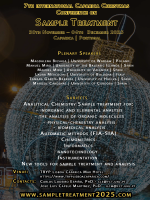Comparison of preservation methods for bacterial cells in cytomics and proteomics
DOI: 10.5584/jiomics.v3i1.115
Abstract
Cell sampling during long-term experiments usually requires reliable storage of cells for later analysis. In this study, we evaluated three different fixation or preservation strategies (sodium azide fixation, deep freezing and vacuum drying) with regard to their effects on bacterial cells. Pseudomonas putida was used as a model organism and stored for shorter (2 d) and longer periods (28 d). The impact of the treatments (preservation method, duration) was evaluated on the level of single cells using flow cytometry and on the population level using protein mass spectrometry. The effect of sodium azide fixation on scatter parameters and DNA content of bacterial cells was small (1.01 ≤ sd ≤ 1.76) for short term and larger for long term storage (1.59 ≤ sd ≤ 2.33), as determined by FlowFP fingerprinting. In contrast, deep frozen and vacuum dried samples showed properties highly similar to fresh reference samples, even after extended storage (0.5 ≤ sd ≤ 1.2). The mass spectrometric analysis revealed about 800 proteins for each storage condition and the proteome profiles evaluated by label-free quantification showed characteristic differences. The variation of protein quantity within functional groups was lowest for deep frozen and vacuum dried cell samples (sd log2 relative quantity < 1) and only marginally increased after 28 d. In conclusion, deep freezing was found to be the method of choice, but simple vacuum drying of cells with storage at 4°C can be a convenient alternative.









